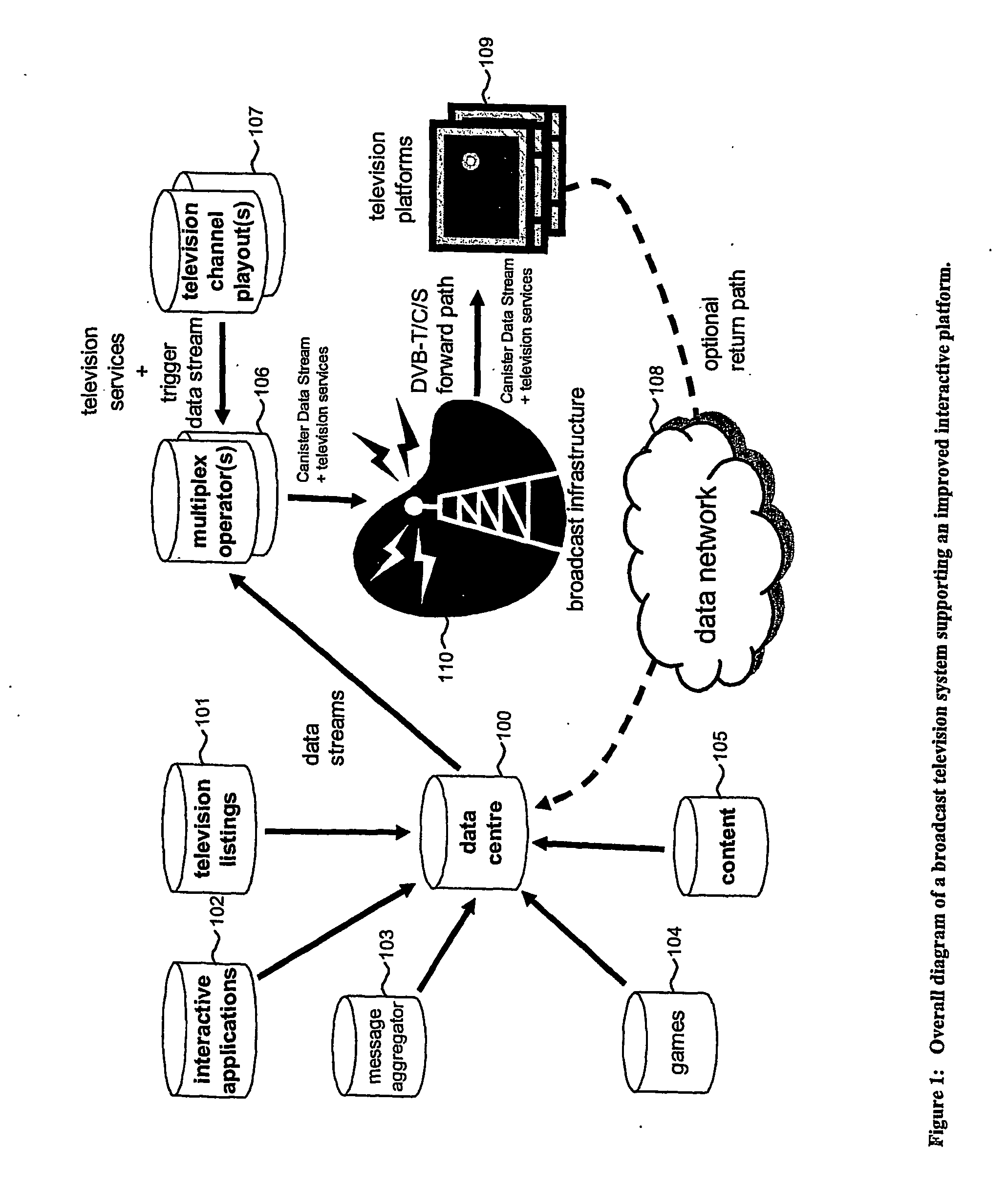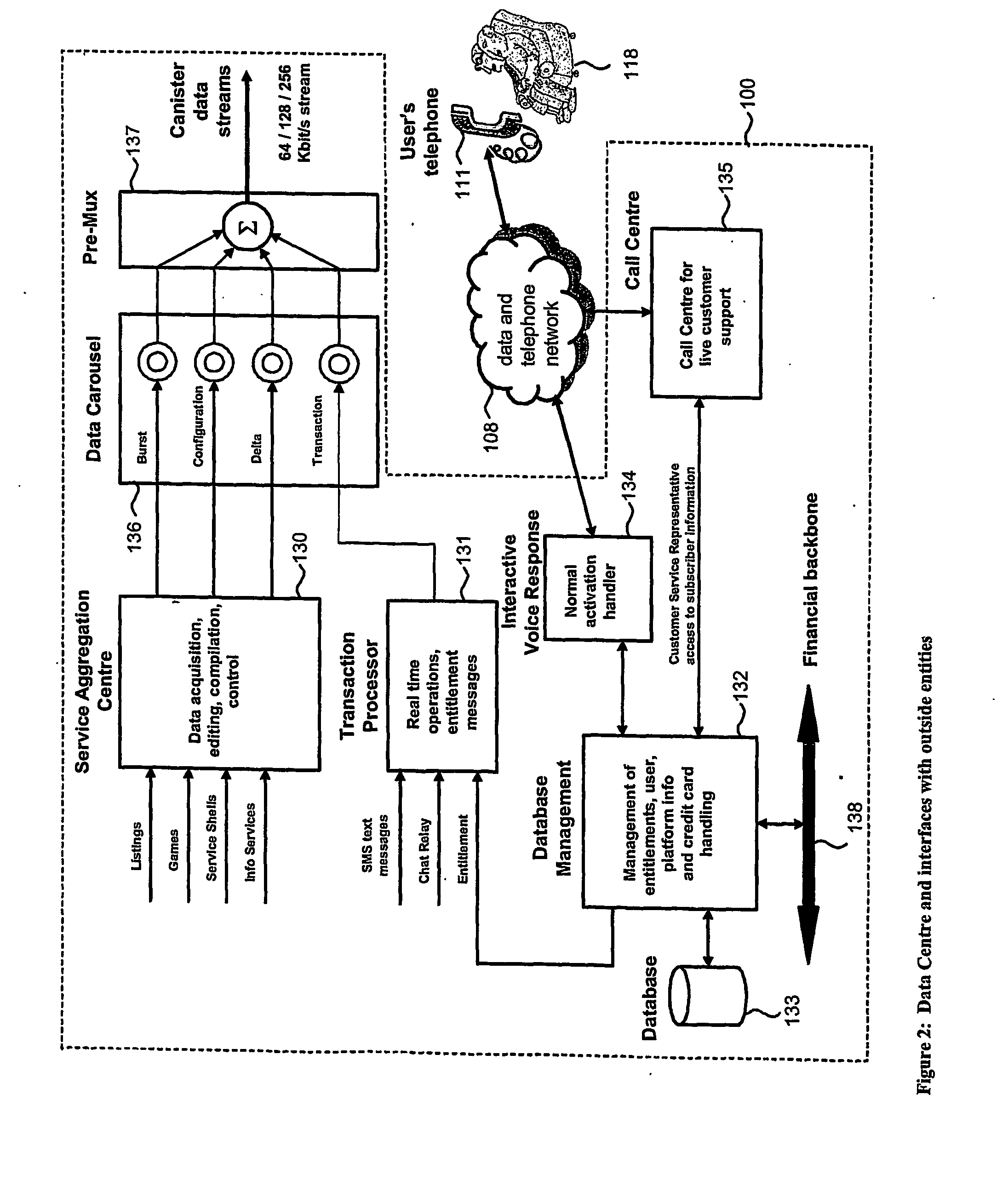Interactive television system
a television system and interactive technology, applied in the field of interactive television systems, can solve the problems of waste of bandwidth, broadcaster repeating broadcasting, user experience undetected delay between selecting the cue, etc., and achieve the effects of cost saving, increased flexibility, and cost saving
- Summary
- Abstract
- Description
- Claims
- Application Information
AI Technical Summary
Benefits of technology
Problems solved by technology
Method used
Image
Examples
Embodiment Construction
[0057]FIG. 1 shows a data centre 100 that receives and aggregates interactive service applications and data from a plurality of interactive service and content providers' databases 101, 102, 103, 104, 105 and 190, and broadcasts said data to a plurality of television receiving platforms 109 as a collection of data streams. The databases may include a television listings database 101 containing television or radio programme listings information such as programme title, start and end times, descriptive text, graphical and audio-video illustrations, including hypertext and metadata. Database 101 may be further complemented by an interactive application database 102 that may include an electronic programme guide (EPG) application for execution and display on platforms 109 where a user may browse through and query said listings content on a television screen. Additionally or alternatively, the system of FIG. 1 may include a database 104 containing interactive educative, informational or ...
PUM
 Login to View More
Login to View More Abstract
Description
Claims
Application Information
 Login to View More
Login to View More - R&D
- Intellectual Property
- Life Sciences
- Materials
- Tech Scout
- Unparalleled Data Quality
- Higher Quality Content
- 60% Fewer Hallucinations
Browse by: Latest US Patents, China's latest patents, Technical Efficacy Thesaurus, Application Domain, Technology Topic, Popular Technical Reports.
© 2025 PatSnap. All rights reserved.Legal|Privacy policy|Modern Slavery Act Transparency Statement|Sitemap|About US| Contact US: help@patsnap.com



